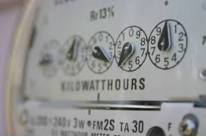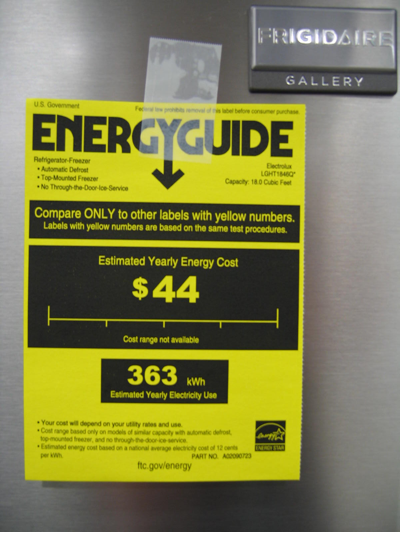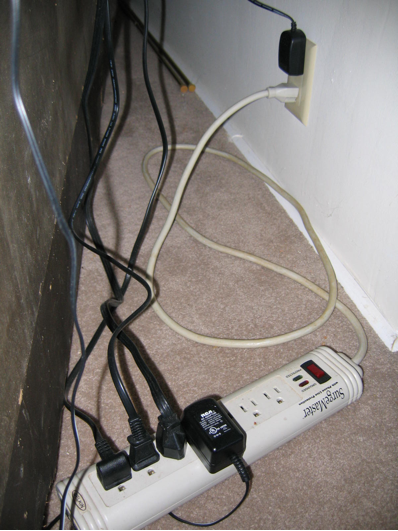by Richard Freudenberger, Living Web Farms Resource & Alternative Energy Coordinator
There are two benefits to saving energy in the home. One is the financial gain of allocating less of your household budget to keeping the household humming, and the other is the less noticeable advantage of managing consumption for the sake of our planet’s resources. The energy used to generate electricity—whether it comes from coal, petroleum, natural gas, or enriched uranium—requires extraction of a natural resource and all the processing and logistics that come with it. In addition to that, using these resources creates emissions and a waste stream that has to be controlled and dealt with in a responsible way.
The September Equinox is a good marker for those of us north of the equator to make a plan to reduce electrical usage. The weather is turning cooler, demand for heat, light, and cooking is greater, and most of us will be spending more time indoors.
Let’s start the conversation by talking about the typical electric bill. Most of us probably just look at the bottom-line dollar amount and pay the charges, but there’s a lot more information in that bill than you may realize.
A typical residential power bill will show consumption in kilowatt-hours (kWh) and make a comparison with the prior year
The use of electrical energy is measured in kilowatt-hours (kWh), or the amount of power, in 1,000-watt units, consumed in one hour. So, a 100-watt bulb on for ten hours uses 1 kWh of energy. Likewise, a 1,500-watt space heater on for one hour uses 1.5 kWh of energy, or 50 percent more.
In the course of a day, all the lights, appliances, accessory chargers, fans, and so forth in the home draw power in different increments and for varying lengths of time, but at the end of the day, consumption can be measured in a common unit, the kilowatt-hour. Utilities generally work on a 30-day cycle, so it’s a simple matter of dividing the total kWh used in a month by 30 (or whatever number of days the cycle happens to be) to get the average kilowatt-hour usage per day. The bill is then tabulated along with fees and taxes at your utility’s residential rate per kWh, which ranges by state from 9.4 cents to over 28 cents.
It sounds fairly simple, but the problem is that not all appliances use power consistently. Some, like your refrigerator, well pump, or forced-air furnace, may cycle on and off several times an hour, making it difficult to gauge how much power is actually being consumed.
So if you were trying to get a clear picture of how your energy budget was spread out you’d have to be able to measure the consumption of not just the steady draws such as lighting but also the inconsistent uses. Fortunately there is an inexpensive device that allows you to do just that.
The Kill A Watt electricity monitor (manufactured by P3 International) is probably the most well-known, but there are many other choices available online and in home improvement stores at prices ranging from around $13 to $30. Once the purview of professional energy auditors, these devices have dropped to a price point where anyone can take advantage of them.
An electricity usage monitor can be used on any 120 volt outlet and costs less than $30
The monitor plugs into a wall socket and has a built-in outlet that accepts the power cord from the appliance you want to test. Controls on its face allow you to select the mode (it displays watts, amperage, voltage, and frequency in addition to kWh) and can it be set to monitor by the day, week, month or year. Once you’ve entered the cost of electricity from your utility, it will count the cumulative consumption of whatever is plugged into it and convert the data to dollars.
With this information you can make educated decisions about how long to run your air conditioner, whether your refrigerator is devouring more than its share of your energy budget, or if items that use standby power like TVs and printers are worth putting on a power strip that you can shut off after use.
If you are shopping for a new appliance, the yellow Energy Guide label displayed on major appliances is a good measure of how much energy the unit will consume annually in kilowatt-hours. It also provides a yearly estimate of how much it will cost to run based on the average cost of energy. The ratings are categorized by appliance size or capacity, and a further indicator is provided by the Energy Star logo, which indicates high-efficiency models. The Energy Star choices are typically more expensive, but not necessarily by a great deal.
The Energy Guide is a good comparison tool for assessing new purchases and comparing your old appliance’s electricity consumption to a new model
That, in fact, makes them a better buy in the long run, because efficiency is a smarter path to energy savings than simple conservation. Keeping an old refrigerator in service to save the cost of buying a new one simply means that you are spending more each year to operate it, especially if it’s close to ten years old. A new Energy Star purchase will lower operating costs, reduce the need for service costs, and give you the features you want, while paying back the original cost of purchase.
What effective steps you can take to turn an audit of your household power usage into savings? Start with simple things like lighting. Incandescent bulbs are a thing of the past, and compact fluorescents are gradually fading from the scene as well. LED bulbs last ten times longer than icandescents and use 10 percent of the energy while delivering the same amount of lumens, or light output. Replacing every bulb in a moderate-size household will cost as little as $250. You can also take advantage of daylighting for free by opening shades and curtains in the winter which will let in light and some incidental solar energy.
A pre-programmable, or a smart WiFi learning thermostat would also be a good investment, ranging in cost from $100 to around $250, plus installation. These allow you to specifically set your home’s climate control to the times you typically occupy the house, shutting the system down to maintenance levels at other times, resulting in substantial savings. The learning thermostat has a memory that adjusts to changes in your schedule.
Pre-programmable thermostats can be adjusted to suit your schedule and save money by coordinating the climate control system with the hours you spend at home
Water heating accounts for 15 to 17 percent of electricity usage in a typical household, the third largest consumer of household energy behind heating and cooling. For a large family, an investment in an electric heat pump water heater can offer a reasonable payback period, but it’s not really necessary to go to a high-tech fix if you can install a water heater timer (about $55) to control the time cycles that the appliance gets power and a closed-cell foam or fiberglass jacket wrap (about $29) to increase the insulation R-value of the tank. Even setting the internal heater thermostats down to 120 degrees F will result in some savings if the factory presets were set higher.
Phantom load management of the standby electronic devices mentioned earlier are a small but significant part of your household electricity picture. Nationally, standby power accounts for a whopping $11 billion in energy costs, but every little bit of savings helps within the household. The small cubes and black boxes attached to your devices’ power cords are the giveaway that power is being consumed by internal transformers, even when the device is switched off. Plug these into a gang power strip and use the strip’s switch to make sure that no energy is getting to the devices. Problem solved.
The power cube in the wall outlet is about to find a new home on the power strip. Devices like TVs and entertainment equipment usually have built-in standby circuits that consume energy as well
Other than refrigerators, clothes washers are a significant consumer of electricity and water. An electricity monitor will determine if your current washer is power-hungry due to age or just cycle operation, and if you go online to https://www.energystar.gov/products you can research replacement machines that are more efficient. At the Energy Star Tier II level, there are a good selection of products that offer at least a 10 percent energy savings and up to 40 percent water use savings, with costs in the $600-plus range. Horizontal-axis machines are especially efficient and many are domestically manufactured.
Finally, consider having a professional inspect your ductwork and air handling system for leaks and damage. After an HVAC tune-up, a duct inspection can be the most effective path to efficiency, with minimal materials cost. Sub-standard installation and deterioration over time can take a quiet toll through the years, wasting both warm and cool air by not delivering what you’ve paid for to the intended location in the home.





